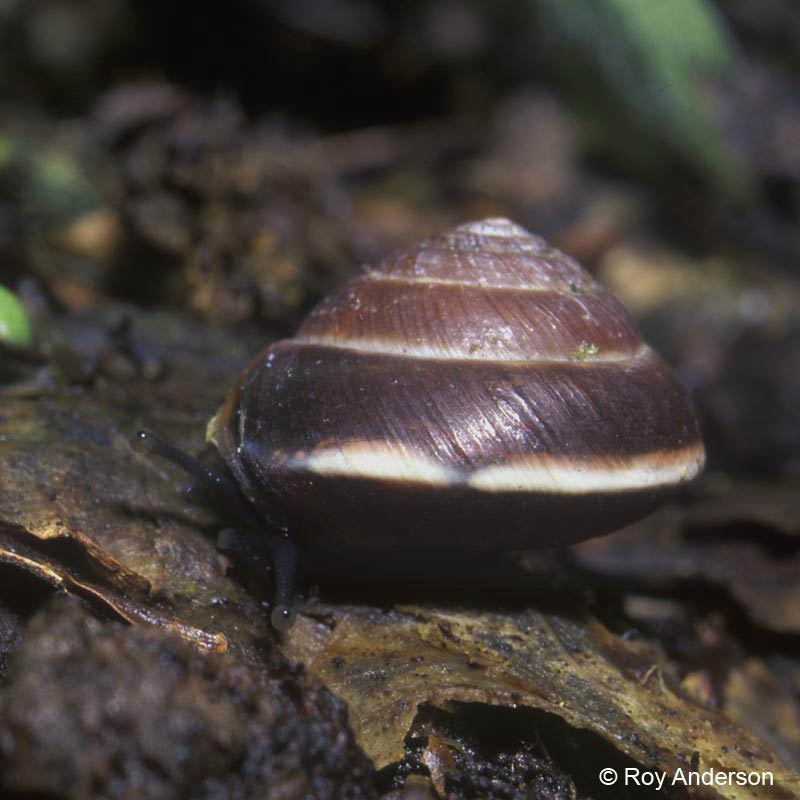Hygromia cinctella
|
Hygromia cinctella. (Photo: © Dr. Roy Anderson, MolluscIreland) |
|
Hygromia cinctella: note white stripe. (Photo: © Dr. Roy Anderson, MolluscIreland) |
|
Hygromia cinctella: juvenile. (Photo: © Fvlamoen, Wikipedia) |
Family
Hygromidae
Species
Hygromia cinctella (Draparnaud, 1801)
Common name
Girdled snail
Description
The shellShell:
A hard, inflexible, calcareous or chitinous structure that vary in size and may either completely encasing the animal, covering some part of it or be internal.
of the girdled snail is 6-7 mm high and 10-14 mm wide, with 5-6 whorlsWhorls:
Pleural of whorl. A whorl is a complete spiral turn/growth of the shell of a mollusc. The whorls are counted from the apex outwards.
. The shellShell:
A hard, inflexible, calcareous or chitinous structure that vary in size and may either completely encasing the animal, covering some part of it or be internal.
is tan to light brown, with pale colored blotches. The outer rim of the body whorlBody whorl:
The large, final coil (most recently formed) of a mollusc shell that contains the body of the snail, i.e. from the aperture to approximately one whorl back.
of the shellShell:
A hard, inflexible, calcareous or chitinous structure that vary in size and may either completely encasing the animal, covering some part of it or be internal.
is very pale when compared to the rest of the whorlWhorl:
A complete spiral turn/growth of the shell of a mollusc. The whorls are counted from the apex outwards.
. The apertureAperture:
The major opening of a shell that the body of the animal may be retracted.
(mouth) is oval and the umbilicusUmbilicus:
A navel-like indentation or depression in the center of the shell. It may be described as open (inside of columella visible), partially closed (partly covered by base of aperture) or completely closed (not visible). The width of the umbilicus is a measure of its greatest diameter.
(navel) is small and narrow.
Native range
Mediterranean region
Distribution
Europe
Other: Mediterranean region
Ecology
Found on hedges and in gardens where they aggregate in large numbers.
References
Anderson 2005; Kerney et al. 1979




